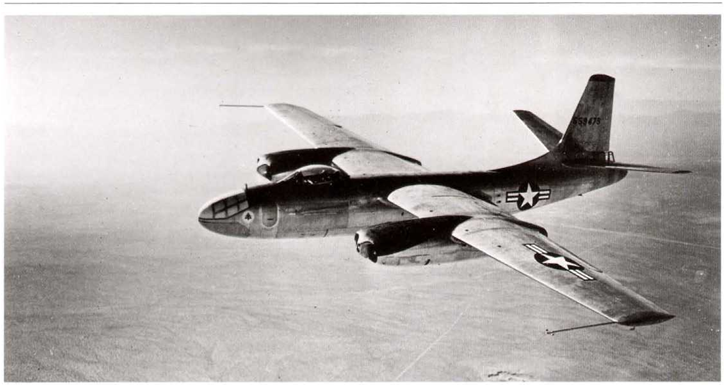17. RADIO CALL AND IDENTIFICATION MARKINGS
a. Radio call numbers of not less than four numerals will be maintained on all AAF aircraft except as stated in paragraph 17.c. These will be applied to both sides or each outboard side, as applicable, of the vertical stabilizer and rudder assembly, except that on rotary winged aircraft, they will be applied to the sides of the fuselage. These call numbers, or designators, will be of a size discernible at a distance of 150 yards. The suggested minimum size is 8 x 12 inches. They will be derived by deletion of the first numeral of the serial number (4) and the hyphen (-), and the combination of the remaining four or more numerals. In case of serial numbers of type 41-7, use zero as necessary to make four numerals as 1007. Colors will be black for uncamouflaged surfaces, and yellow for camouflaged surfaces except that black camouflaged planes will have insignia red call numbers. Decalcomanias are authorized if available,
b. IDENTIFICATION MARKINGS.
(1) On all aircraft, except helicopters and lighter than-air, operating solely within the continental limits of the United States, an identification marking will be placed on the lower surface of the left wing, and each side of the fuselage if space permits without relocation of the insignia. These identification markings will consist of two letters and three numerals determined as outlined below. Letters and numerals will be of uniform size, with the letters separated from the numerals by a dash.
NOTE If any duplication of identification symbols should occur on permanently assigned aircraft at any one installation, a suffix letter may be used to further identify the aircraft. The suffix letter will be of a size and so placed so that the size of the basic identification symbol is not reduced.
(2) The wing markings will be centrally placed on single engine aircraft and will be placed outboard of engine nacelles on other aircraft, with the top of the letters and numerals forward. The letters and numerals will be the same height as the star in the wing insignia, with the width two-thirds the height, width of strokes one-sixth the height and with spacing one – sixth the height.
(3) The location of the fuselage markings will depend upon the fuselage surface available therefor. They will be the largest size practicable, determined by available space, however, in no case will they be smaller than 8×12 inches, or larger than 32 x 48 inches. The proportion of width, and length of the stroke, to the height will be the same as that of wing markings insofar as practicable.
(4) Identification markings will be yellow on camouflaged surfaces and black on aluminized surfaces, and of either gloss or lustcrless enamel or lacquer.
(5) The first letter of the identification marking will identify the type of aircraft, the second letter will be an equivalent for the model number and the numerals will be the last three numerals of the serial-number. The tetters to be used for the various types and models, together with an example of the identification markings of a specific aircraft of each type are set forth below:
(The following new aircraft were added to the Glider section of this paragraph):

(The following paragraphs were added or revised):
17.c. Radio call numbers are not required on primary trainers which do not have radio equipment and which bear field identifying numbers; however, identification markings required by paragraph 17.b. are applicable to primary trainers.
19.g. Helicopters used in pilot training may have fuselage finished international orange color shade No. 598 for purposes of visibility.
* * *










